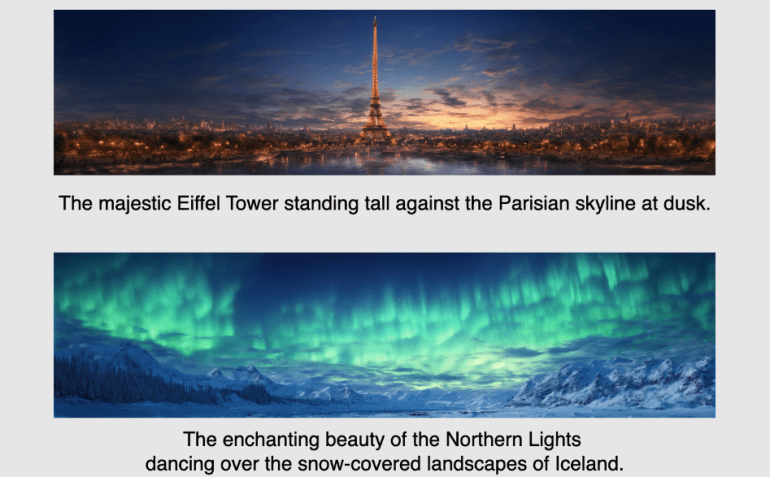- Lumina-T2X revolutionizes AI media generation, converting text into images, videos, 3D renderings, and synthesized speech.
- Overcomes challenges of existing models by integrating diverse modalities into a unified token space.
- Unique feature: encodes any modality into a 1-D token sequence, enabling high-resolution content generation.
- Utilizes advanced techniques like RoPE, RMSNorm, and KQ-norm for faster training convergence and stable dynamics.
- Remarkable efficiency: consumes only 35% of computational resources compared to leading models without compromising quality.
Main AI News:
In the realm of AI-driven media generation, translating textual descriptions into vibrant images, captivating videos, intricate 3D renderings, and lifelike synthesized speech poses a formidable challenge. Many existing models struggle to excel across all these modalities, often yielding subpar results, exhibiting sluggish performance, or demanding substantial computational power. This complexity has long hindered the seamless generation of diverse, top-tier media content from text inputs.
While certain solutions can tackle specific tasks like text-to-image or text-to-video conversion, they frequently necessitate amalgamation with other models to achieve optimal outcomes. Moreover, these solutions typically impose hefty computational demands, rendering them less accessible for widespread adoption. Additionally, concerns persist regarding the quality and resolution of the generated content, necessitating further refinement. Furthermore, efficient handling of multi-modal tasks remains a recurring hurdle.
Enter Lumina-T2X, an innovative solution poised to overcome these challenges through its groundbreaking Diffusion Transformers. At its core lies the Flow-based Large Diffusion Transformer (Flag-DiT), a powerhouse capable of supporting up to 7 billion parameters and processing sequences spanning a staggering 128,000 tokens. This revolutionary model seamlessly integrates diverse media formats into a unified token space, empowering it to churn out outputs of any resolution, aspect ratio, or duration.
One of Lumina-T2X’s most remarkable features is its unparalleled ability to encode any modality into a one-dimensional token sequence, be it an image, a video, a 3D object view, or a speech spectrogram. By introducing unique tokens like [nextline] and [nextframe], it transcends the limitations of training resolutions, enabling the generation of high-resolution content beyond conventional bounds. This ensures that the model consistently delivers high-quality outputs, even for resolutions beyond its training scope.
Notably, Lumina-T2X boasts accelerated training convergence and steadfast dynamics, courtesy of cutting-edge techniques such as RoPE, RMSNorm, and KQ-norm. Engineered to operate with diminished computational resources without sacrificing performance, this paradigm-shifting framework sets a new benchmark for efficiency. For instance, the default configuration of Lumina-T2I, equipped with a 5B Flag-DiT and a 7B LLaMA text encoder, consumes a mere 35% of the computational resources compared to its counterparts. Despite this efficiency drive, the model excels in generating high-resolution images and seamless videos, leveraging meticulously curated text-image and text-video pairs.
Conclusion:
The emergence of Lumina-T2X marks a pivotal moment in the AI media generation landscape. Its ability to seamlessly convert textual descriptions into a myriad of media formats, while consuming significantly fewer computational resources, is poised to disrupt the market. This innovation not only streamlines the content creation process but also democratizes access to high-quality media generation tools, opening doors for businesses and creators to explore new realms of creativity and expression. As Lumina-T2X sets new benchmarks for efficiency and performance, it heralds a future where AI-driven media generation is more accessible, versatile, and impactful than ever before.

